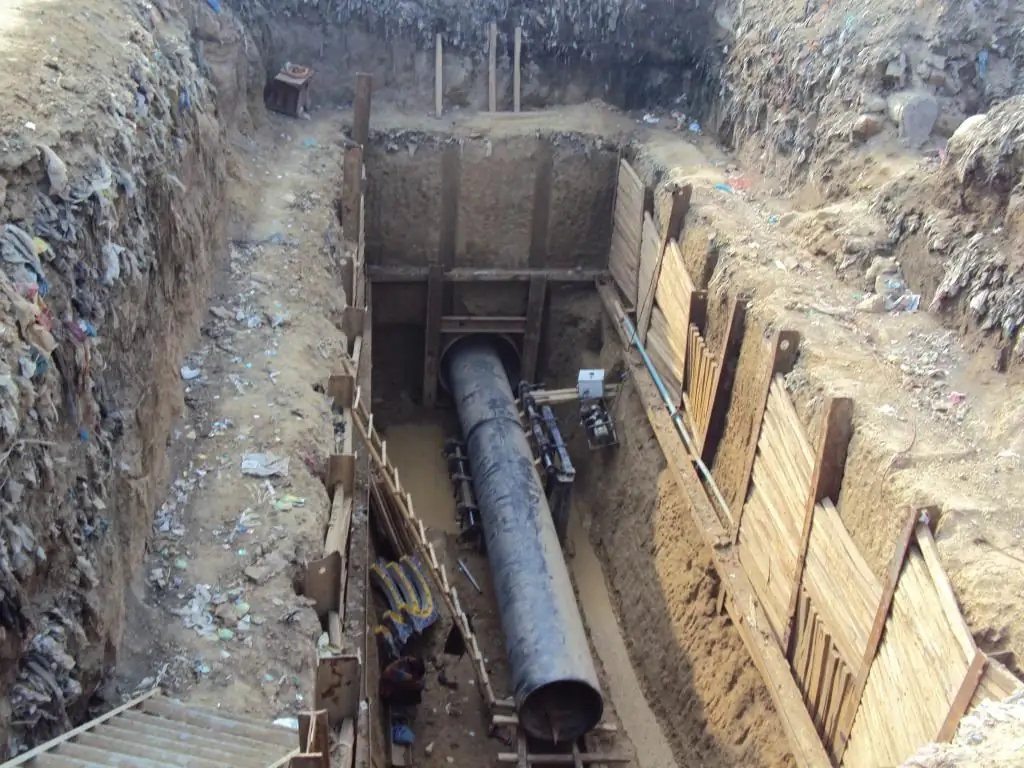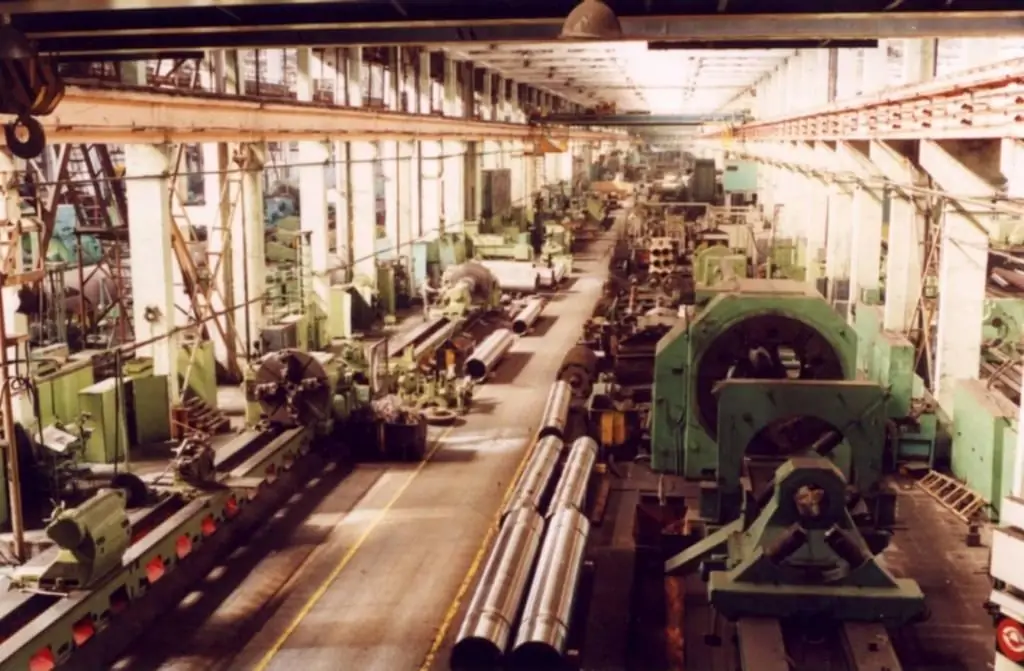2025 Author: Howard Calhoun | [email protected]. Last modified: 2025-01-24 13:10:35
Product manufacturability indicators are the most important component of assessing the quality characteristics of products, designs, parts, and so on. They provide a comprehensive description of the effectiveness of technological products in relation to the adaptability of the design to its application in specific conditions, for example, in production.
TCI: concept and features

The provisions that characterize the essence, content, composition and norms used in the selection of TKI determine the standards of the Unified System of Technological Preparation of Production. Today, the development of mechanisms for manufacturability is included in the wide functionality of the technological preparation of production, which is provided and carried out at all stages of design preparation.
Manufacturability indicators: GOST
According to GOST 14.205-83 TKI is nothing more than a complex of those product design characteristics that manifest themselves in the ability to optimize resource(temporary, material, labor and other) costs in the process of production preparation in technical terms, manufacturing, further use and repair of structures under certain conditions related to organizational and technical.
Types of indicators

Manufacturability indicators characterize the quality of structures, parts and other mechanisms. To date, there are seven varieties of these indicators. It is advisable to consider them in more detail.
Indicators of technological rationality characterize the level of optimality of the structure and composition of the manufacture of the part, approved structural materials and shapes. We are talking about factors such as the complexity of the design of the product; her assembly; ease of removal of components; availability of service points, repairs; testability; weight imbalance of parts under mounting conditions outside the company that is the manufacturer.
Continuity indicators
There is also such an indicator of the manufacturability of the design as continuity. It determines both the technological and constructive continuity of the mechanism, the repeatability and variability of its components, as well as the structural parts of the product and relevant materials. Here it is necessary to calculate the coefficients of novelty of the mechanism; the use of unified structural components, for example, holes, threads, and so on; repeatability and applicability of the material in the mechanism; repeatability of structural components and others.
Indicatorsresource intensity and manufacturability

There are indicators of the manufacturability of a part that characterize the resource intensity (both private and complex). The first variety should include material consumption, labor intensity, energy intensity. The presented indicators determine labor costs, material, energy, time. All of them go to the creation and further operation of the mechanism.
Indicators of manufacturability of production determine the labor intensity of the mechanism in the production preparation of the technical plan, the labor intensity regarding the creation and installation of the product, the material intensity in the creation, the energy intensity in the creation of the mechanism, the duration of this creation, the technological s / s of the mechanism in the manufacture.
Maintainability

Another basic indicator of manufacturability depends on the operating conditions. It is advisable to include the complexity of the mechanism under operating conditions; its complexity during maintenance, installation and dismantling; disposal labor intensity; material consumption of the mechanism in operating conditions; energy intensity under operating conditions; maintenance duration; technological s/s in operation.
Indicators of general and repair manufacturability

Manufacturability indicators in the repair plan determine the material intensity, labor intensity and, of course, energy intensity during repair work,duration of these works, technological s/s.
As for the indicators of general manufacturability, we are talking about the characteristics of the manufacturability of the mechanism in accordance with all stages of the life cycle. This includes the specific complexity of the structure, the specific energy and material consumption, the specific technological s / s of a part or mechanism.
It should be noted that the use of specific manufacturability indicators takes place when it is necessary to ensure the comparability of the characteristics and indicators of products of the same type. Such designs, as a rule, have different values of key parameters or implement different utility rates.
Indicators by the number of properties
In accordance with the number of characteristics used, complex indicators of manufacturability are distinguished, single (in other words, private) and group. Single describe one property, complex - several at once. Based on the totality of the presented types of indicators, it is customary to determine the quality of the structure.
Evaluation methods

We examined the calculation of manufacturability indicators and their types. So, it's time to start estimating methods. The final decision regarding the choice of the most rational design option from among the possible ones is made solely on the basis of the results of the assessment of manufacturability in quantitative terms.
The most common and currently used methods are absolute assessment, relative and difference. Absolute indicatoris calculated as K \u003d (K (1) … K (n). The relative indicator of manufacturability can be calculated as K (v) u003d K / K (v).
It is worth bearing in mind that a qualitative assessment is based on engineering visual techniques. It is carried out according to technological and design properties separately. That is why it is important to achieve the maximum level of TI. Qualitative evaluation is usually carried out before quantitative evaluation. However, the techniques are allowed to be combined, which is widely used in practice today.
Qualitative assessment can be represented as "good" or "bad", "possible" or "not", in other words, the basis here is the analysis of the structure for compliance with generally accepted standards and requirements. Recently, such a mechanism for qualitative characteristics of technological and design properties as the intensity scale has been used. That is, the transition to the assessment of the quantity is made through the introduction of points.
Conditions to be met

Having fully considered the types of indicators of manufacturability of products and methods for their evaluation, we can proceed to the main conclusions. After testing the product for manufacturability, one way or another, a number of conditions must be provided:
- The lowest possible level of s / s and labor intensity regarding the manufacture of a product, design or part.
- Ultimately low labor intensity and prices for product repairs and maintenance.
- The lowest possible level of material consumption of the design, product.
It is important to note thatToday, the actual problem is the issue of accuracy. When solving it, the technologist is obliged to fully ensure the accuracy of manufacturing the products required by the designer, and high efficiency and productivity. The question is quite sensitive, which is why modern manufacturers strive to recruit decent staff and constantly train them. Often, the accuracy of manufacturing a product is achieved in one of two ways, which are fundamentally different from each other. The first of these involves trial measurements and passes, the second is the automatic receipt of dimensions through the use of customized machines. Naturally, in modern production, the second technique is increasingly used. The world is moving towards automation.
Measures to improve manufacturability
In order for the manufacturability of a product, product or design to be as high as possible, it is necessary to plan and implement a number of activities, including:
- Increasing the serialization of products, products or their components through unification, standardization, and grouping in accordance with design properties.
- Relative restriction of the range of product components and materials used.
- The application of those constructive techniques that are considered already mastered in production.
- Using the most efficient manufacturing processes as well as standard manufacturing tools.
- Use sustainable material grades.
- Use sustainable material grades.
- Development and subsequent application of progressive design ideas that lead to increased workpiece accuracy and the use of (at best) waste-free technology. We can talk about waste minimization here.
- Using advanced techniques to make component parts stronger.
- Using science-based mechanical safety factors, as well as standard methods for calculating and testing products.
- Increasing the level of availability, suitability for inspection, ease of removal (if necessary), assembly, interchangeability, and reproducibility of products.
- Restricting the replacement of product components as a result of repair work or maintenance.
- Restriction on the qualifications of employees performing repairs and maintenance of the structure.
Currently, the assessment of how technologically a product is based on three types of indicators. Let's consider them in more detail. Firstly, these are the basic indicators of manufacturability. Their values are necessarily regulated by the relevant directive papers for the product. Secondly, the indicators of the designed product. They are achieved by testing the design, mechanism or products for manufacturability. Thirdly, indicators of the degree of manufacturability of the product, the values of which are now regulated by the relevant directive papers that determine the production of the product.
It should be remembered that the types of evaluation arethis is the most important factor that describes the methodology for comparing product options and the reasonable choice of the most optimal option among many others similar to the chosen one.
Recommended:
Staff loy alty is a correct, sincere and respectful attitude towards management and employees. Formation, evaluation and methods of increasing loy alty

This article will tell you in detail what is staff loy alty in an organization, how to determine the level of loy alty and what are the ways to increase it. And also after reading you can find out the features of the influence of loy alty factors on the work of the company
Loan repayment methods: types, definition, loan repayment methods and loan payment calculations

Making a loan in a bank is documented - drawing up an agreement. It indicates the amount of the loan, the period during which the debt must be repaid, as well as the schedule for making payments. The methods of repayment of the loan are not specified in the agreement. Therefore, the client can choose the most convenient option for himself, but without violating the terms of the agreement with the bank. In addition, a financial institution can offer its customers various ways to issue and repay a loan
The concept and types of investment projects, methods for their evaluation

Investment projects are created and pursue the achievement of certain goals that are associated with generating income. But they are not always successful - many of them are frankly a failure. To minimize the likelihood of negative events, it is necessary to have a high-quality theoretical base. And the concept and types of investment projects will help to start here
Laying communications: types, classification, methods and methods of laying, purpose of communications

Laying communications is one of the most important stages in the construction, for example, of a new residential building. To date, there are a large number of the most diverse ways of installing communications. Their features, as well as advantages and disadvantages, have led to the fact that an individual method is selected for each case
Good Forex indicators. The best Forex trend indicators

Forex indicator is an important currency market analysis tool that helps traders make optimal trading decisions

